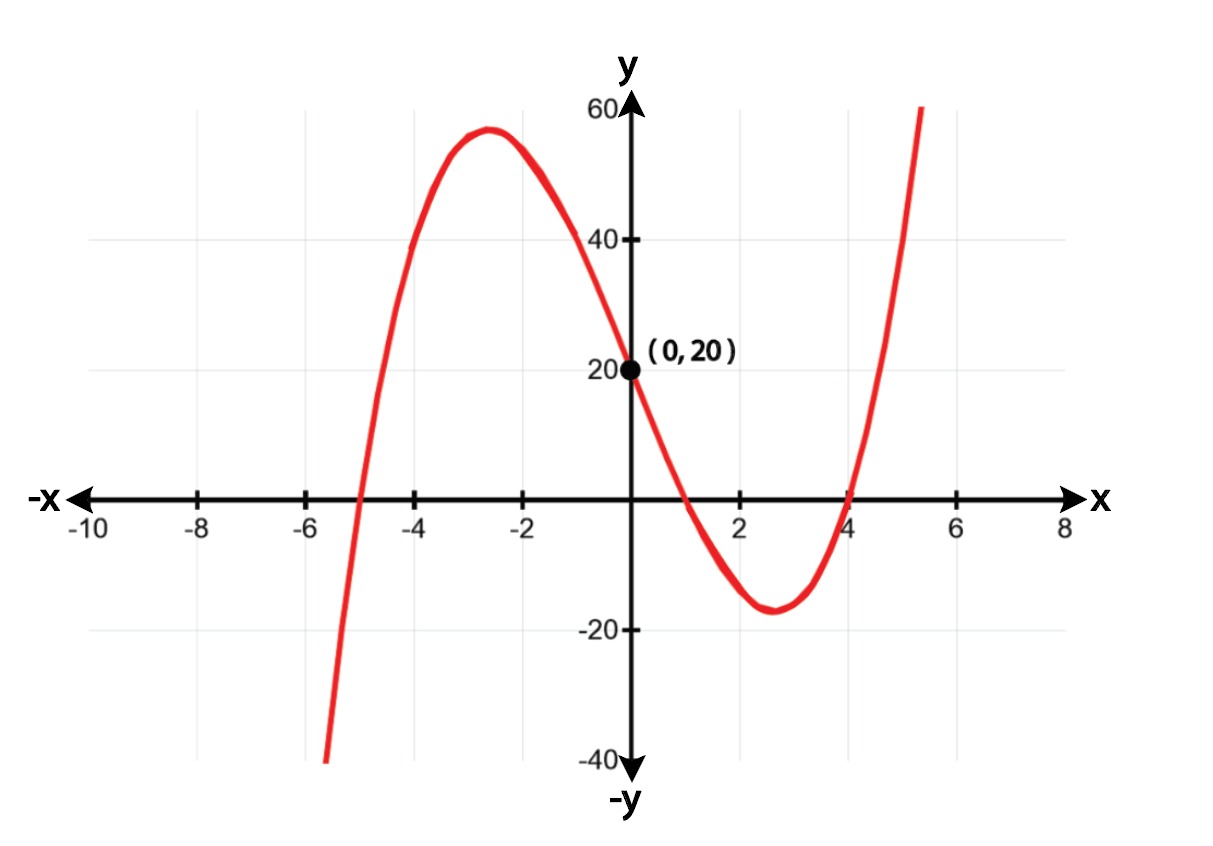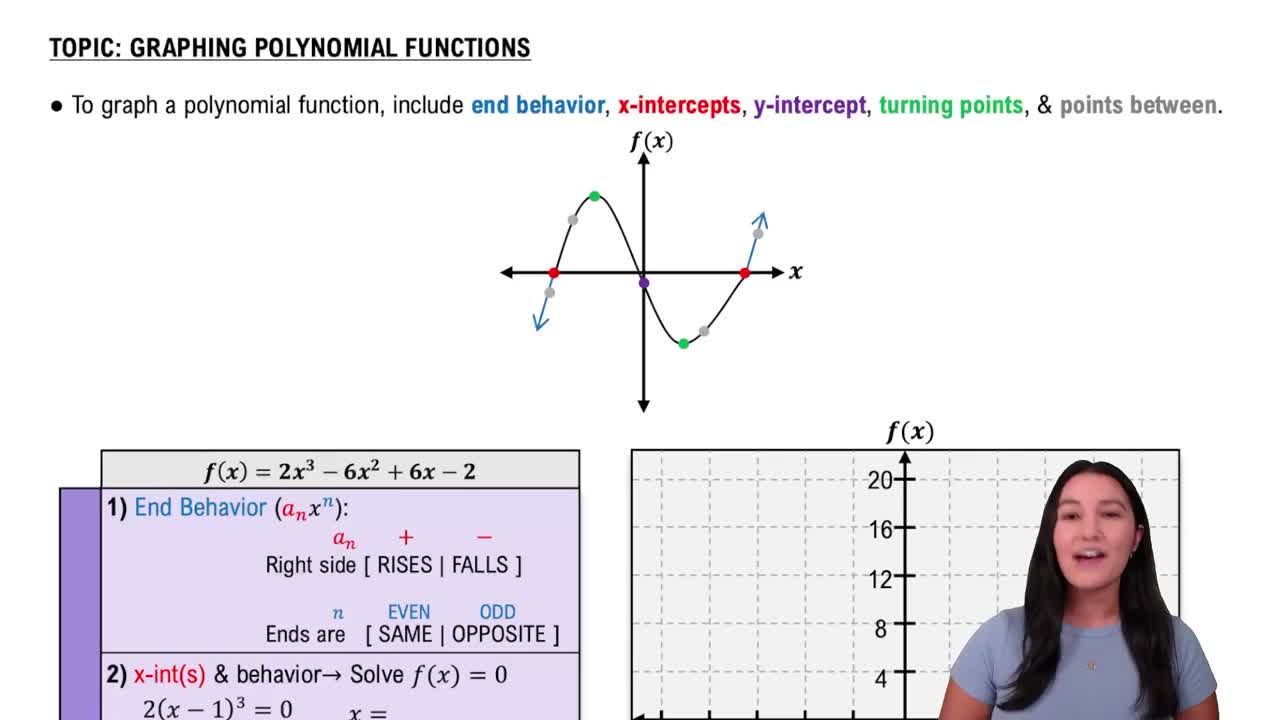Here are the essential concepts you must grasp in order to answer the question correctly.
Polynomial Functions
A polynomial function is a mathematical expression involving a sum of powers in one or more variables multiplied by coefficients. The general form is f(x) = a_n*x^n + a_(n-1)*x^(n-1) + ... + a_1*x + a_0, where n is a non-negative integer. Understanding the degree of the polynomial is crucial, as it determines the function's behavior and the number of roots it can have.
Recommended video:
Introduction to Polynomial Functions
Degree of a Polynomial
The degree of a polynomial is the highest power of the variable in the polynomial expression. It influences the shape and number of turning points in the graph. For example, a polynomial of degree n can have up to n real roots and n-1 turning points, which is essential for analyzing the graph's behavior and finding the least degree polynomial that fits a given graph.
Recommended video:
Standard Form of Polynomials
Graphing Polynomial Functions
Graphing polynomial functions involves plotting points based on the function's values and understanding its key features, such as intercepts, turning points, and end behavior. The graph's shape can provide insights into the polynomial's degree and the nature of its roots. In this case, the graph shows a point at (0, 20), indicating that the polynomial must pass through this point, which is critical for determining its equation.
Recommended video:
Graphing Polynomial Functions

 Verified step by step guidance
Verified step by step guidance Verified video answer for a similar problem:
Verified video answer for a similar problem:



 6:04m
6:04m